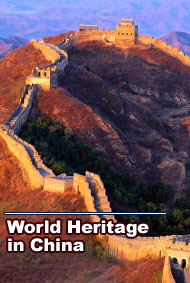
|
|
|
China Engraved Block Printing
In 2009, China Engraved Block Printing was inscribed on the Representative List of the Intangible Cultural Heritage of Humanity by the UNESCO. Description The traditional China engraved block printing technique requires the collaboration of half a dozen craftspeople possessed of printing expertise, dexterity and team spirit. The blocks themselves, made from the fine-grained wood of pear or jujube trees, are cut to a thickness of two centimetres and polished with sandpaper to prepare them for engraving. Drafts of the desired images are brushed onto extremely thin paper and scrutinized for errors before they are transferred onto blocks. The inked designs provide a guide for the artisan who cuts the picture or design into the wood, producing raised characters that will eventually apply ink to paper. First, though, the blocks are tested with red and then blue ink and corrections are made to the carving. Finally, when the block is ready to be used, it is covered with ink and pressed by hand onto paper to print the final image. Block engraving may be used to print books in a variety of traditional styles, to create modern books with conventional binding, or to reproduce ancient Chinese books. A number of printing workshops continue this handicraft today thanks to the knowledge and skills of the expert artisans. Criteria for inscription on the Representative List R1: The element is transmitted from generation to generation through a traditional master-apprentice system and gives its practitioners a sense of identity and continuity; R2: Inscription of the element on the Representative List would contribute, through celebrating creativity and diversity, to the visibility of intangible cultural heritage at the local, national and international levels; R3: Proposed safeguarding measures include research, awareness-raising, supporting the recognized masters and facilitating inter-generational transmission; R4: Three relevant organizations of practitioners were widely involved in the process of nomination and gave their free, prior and informed consent; R5: The element is inscribed on the National List of Intangible Cultural Heritage administered by the Department of Intangible Cultural Heritage of the Ministry of Culture. |